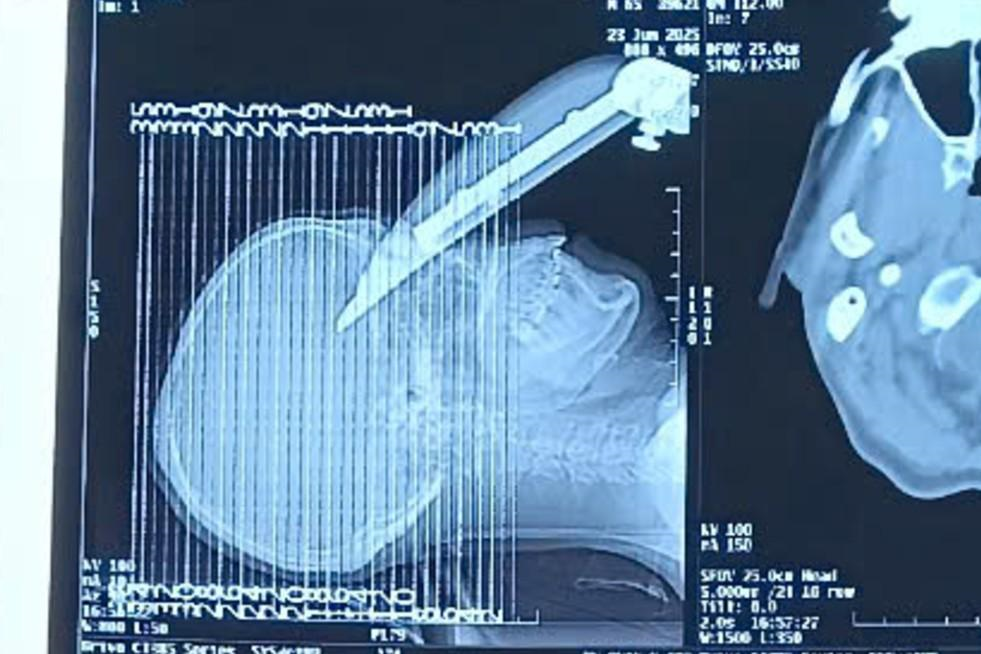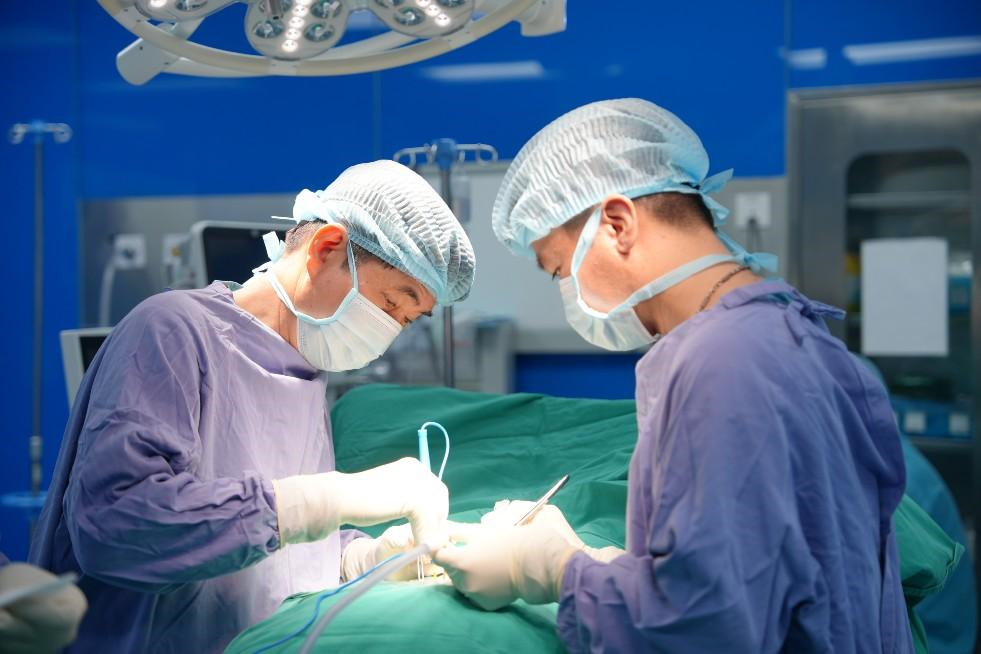The large blade penetrated 10cm into the man's eye socket and brain.
At 7:30 PM on 23/6, Hong Ngoc General Hospital – Phuc Truong Minh admitted Nguyen Duy Van, 65, to the emergency room. A vegetable slicer blade was lodged in his right eye, penetrating his skull and brain. He was semi-conscious, vomiting profusely, and at risk of aspirating, respiratory failure, and cerebral hemorrhage.
Recognizing the severity of the case, Dr. Dinh Quoc Anh, deputy head of the intensive care unit, along with the medical team, immediately initiated emergency procedures and activated a hospital-wide “code red.” Within 30 minutes of admission, the anesthesiology and resuscitation team stabilized the foreign object to prevent further injury, controlled the bleeding, intubated the patient to secure his airway, and prepared for surgery.
 |
X-ray of Van's head. Photo: Hong Ngoc General Hospital |
X-ray of Van's head. Photo: Hong Ngoc General Hospital
Prof. Dr. Ha Kim Trung, deputy medical director and neurosurgeon at Hong Ngoc General Hospital – Phuc Truong Minh, led the surgical team. He emphasized that rapid intervention is crucial in traumatic brain injuries, especially in this case. The blade, approximately 10cm long, had penetrated from the eye socket into the brain parenchyma, severely injuring the right frontal lobe and right eye. Two hours after the accident, Van showed signs of declining consciousness, putting his life in danger. Emergency surgery was essential to minimize neurological complications and control the risk of infection.
The two-hour surgery brought the patient back from the brink.
The approximately 50cm long, irregularly shaped blade, lodged in Van’s skull, presented challenges in managing his airway and intubation. Before the surgery, the anesthesiology and resuscitation team stabilized the blade to prevent further injury and controlled the bleeding, facilitating intubation and airway management.
Prof. Trung explained, “In this case, the foreign object acted as a temporary plug. Premature removal could have caused massive bleeding or vascular damage, leading to death. We opened the skull in the right frontal region, identified the location and extent of the injury, carefully separated the blade from the surrounding brain tissue, and removed it. Meticulous precision was necessary throughout the procedure to avoid further damage. After removing the blade, we cleaned the wound, placed a drain, and closed the incision in two layers to preserve as much brain function as possible.”
 |
The surgical team at Hong Ngoc General Hospital saved the patient after a two-hour operation. Photo: Hong Ngoc General Hospital |
The surgical team at Hong Ngoc General Hospital saved the patient after a two-hour operation. Photo: Hong Ngoc General Hospital
After more than two hours, Prof. Ha Kim Trung and the surgical team successfully completed the operation. Van survived the critical period and was transferred to the intensive care unit for further treatment.
According to Prof. Trung, Hong Ngoc General Hospital is always prepared to handle complex and critical emergency cases. The hospital prioritizes interdisciplinary collaboration to optimize treatment time and save lives.
The Dan
Following Van's case, medical experts advise caution when repairing or using sharp machinery at home. Always check equipment, follow instructions, and wear necessary protective gear to prevent accidents.
In case of an accident, time is of the essence. Never attempt to remove a foreign object from a wound, as this could cause severe bleeding or further injury. Instead, apply pressure to control bleeding, stabilize the object, and immediately transport the victim to the nearest medical facility for professional care.












